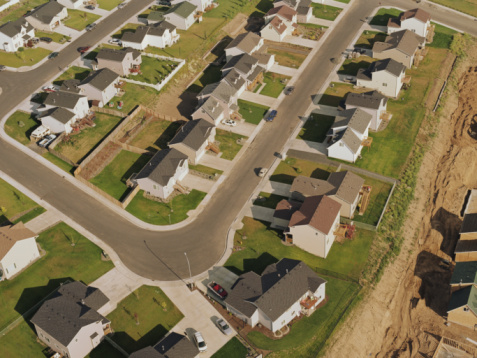Housing
Fannie and Freddie Looking for 5% Home Price Growth in 2014
Published:
Last Updated:
The numbers from the housing sector by and large have been weaker than originally expected during the first months of 2014. A new, revised 2014 outlook from Freddie Mac is out, and we have compared it to the most recent outlook from Fannie Mae from the end of April. The result is that construction and home sales are expected to be up. The bad news is that appreciation seems to have peaked, which would coincide with some of the data out in recent weeks signaling that new homebuyers were suffering from sticker shock.
Freddie Mac’s outlook is for new home construction to increase by 18%, with an average house price appreciation moderating to an annual growth of 5% in 2014.
Freddie Mac also maintained its projection that new and existing home sales will total 5.5 million for 2014, the same as for 2013. Single-family mortgage originations are expected to drop about 35% in 2014, but that is from a large decline in refinancing. Freddie Mac also sees refinance accounting for about 40% of originations in 2014, down from close to 60% in 2013.
Lastly, Freddie Mac assumes that the 30-year fixed-rate mortgage rate will gradually rise higher to about 4.6% by the end of 2014, with fixed rates rising gradually during the second half of the year due to Federal Reserve tapering its bond and mortgage-backed security purchasing.
ALSO READ: Why the Fed Could Start Raising Rates Sooner Than Expected
Fannie Mae still only has its outlook as of April, and that should be updated shortly. The outlook at the time was for housing starts to rise to 1.051 million in 2014 from 925,000 in 2013. Fannie Mae also forecast that the median existing home price would rise to $207,000 from $197,000, with median new home prices rising to $277,000 from $266,000. Its forecast at the time was for mortgage rates to rise to 4.5% on the 30-year mortgages, as well as for price appreciation of 5.0% on existing homes and 4.1% higher prices for new homes.
The average American spends $17,274 on debit cards a year, and it’s a HUGE mistake. First, debit cards don’t have the same fraud protections as credit cards. Once your money is gone, it’s gone. But more importantly you can actually get something back from this spending every time you swipe.
Issuers are handing out wild bonuses right now. With some you can earn up to 5% back on every purchase. That’s like getting a 5% discount on everything you buy!
Our top pick is kind of hard to imagine. Not only does it pay up to 5% back, it also includes a $200 cash back reward in the first six months, a 0% intro APR, and…. $0 annual fee. It’s quite literally free money for any one that uses a card regularly. Click here to learn more!
Flywheel Publishing has partnered with CardRatings to provide coverage of credit card products. Flywheel Publishing and CardRatings may receive a commission from card issuers.
Thank you for reading! Have some feedback for us?
Contact the 24/7 Wall St. editorial team.